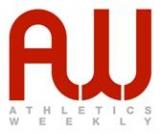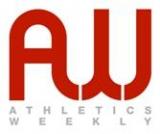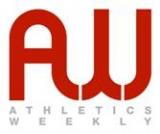Folders |
Running gait: The perfect stridePublished by
Mo Farah is one athlete who has benefited from altering his running style and Jamie French, Matt Long and Barry Cook look at how you can improve yoursIn our first article we looked at US coach Alberto Salazar s focus on biomechanics in trying to get Dathan Ritzenhein to run more efficiently a topic which was first covered by Jennifer Kahn in The New Yorker four years ago. We now look at Salazar s most famous athlete, double Olympic and world champion Mo Farah. Dr Jessica Leitch of Oxford University made biomechanical observations in BMC News which make Farah run more efficiently. In our next two pieces we focus on coaching strategies which can make subtle, yet efficient biomechanical adjustments. We begin by looking at the gait cycle and foot placement of Britain s finest. Gait cycleFarah has undoubtedly optimised his stride length under the guidance of Salazar in terms of his gait cycle. He no longer over-strides and now he has a trail leg action which quickly pulls his rear heel up to his buttock to prepare for the next stride. In recent years, he has increased his cadence too and is closer to optimum stride frequency, at which point the energy cost of running is the least. Farah has been able to increase the ratio of the swing” phase of his gait cycle (when the foot is in the air) compared to the support” or stance” phase (when the foot is on the ground). His action is far closer to that of a sprinter whose stance” time represents approximately one fifth of the gait cycle when at maximal speed. Foot placementWhen the point of first contact is in the rear third of the foot, an athlete is classified as a rear-foot or heel striker. Those who make contact in the middle third of the foot are referred to as mid-foot and those whose first point of contact is the forward third of the foot are classified as forefoot strikers. For the vast majority of his races over 5000m and 10,000m Farah is a mid-foot striker and in terms of foot placement his foot lands slightly in front of his centre of gravity. His foot-stance time is at fractions of a second and this further decreases during his famed sprint finishes over the final 400m. So how can both athlete and coach work towards the above? It may be helpful if both athlete and coach think about potential biomechanical adjustments being made in the: (a) short, (b) medium and (c) long-term. A short-term intervention may be something which coach and athlete can try to effect during the session itself or shortly afterwards. A medium-term intervention may involve modifications over a period of weeks or even months in terms of a microcycle or mesocycle of training. A long-term intervention may involve changes to the periodised training programme of an athlete over a period of many months or even years. Short-termCoaches can make short-term interventions by using command-based instructions to the athlete during a session. Shouting lengthen your stride” says absolutely nothing about how to actually achieve this. On the other hand, at least the process-based command pick your knees up” gives the athlete a clue about how to make a biomechanical adjustment, which may ultimately result in the goal of increased stride length. There is a danger, though, of being too quick to give feedback rather than observing in silence to make sure what they are witnessing is ingrained running form, as opposed to a one-off. Also, athletes do not tend to learn as much from preachy, instructional commands and this may in turn compromise long-term changes. Medium-termWe know that stride length is dependent upon hamstring flexibility and hip flexor strength. A medium-term drill, for example, could involve coach and athlete incorporating static stretching into the training programme as part of a discreet flexibility session. It is worth noting that the latest research indicates that static stretching is an inappropriate mode of warm up and stretching to restore range of movement should take place after sessions (holding stretches for up to 15 seconds). To optimise stride length, the aforementioned longer stretches should be performed over 25-30 seconds to extend range of motion. As well as static stretching, knee lift drills and eccentric squatting can help with stride length as it aids flexibility.
Trail-leg action can be improved by quadriceps flexibility. Cadence is dependent on fast-twitch utilisation, which can be improved by plyometrics such as hopping, bounding and double-footed jumps. Explosive weights and plyometrics training help to increase the amount of force that can be generated quickly. More efficient foot-striking can be improved with drills associated with dorsiflexion, which is the bending toward the extensor aspect of a limb for example, hurdle drills pulling the trail leg over and pulling the toe up into the top of the trainer help. Additionally, static stretches of the gastrocnemius and soleus help. More effective foot placement can be aided by hamstring and glute strengthening, plus hip flexor and hamstring curls. A reduction in foot-stance time can be improved by both plyometrics and sprint base drills such as flying 30s” (achieve top speed in approach and maintain speed over a 30m zone). Long-termFor a longer-term intervention, the appropriate use of downhill running for the athlete over a period of months and years would be useful. Archer (2011) recommended that downhill running repetitions can be practised on a preferably soft, smooth, gradual grass hill of 50- 200m in length. Avoid over-striding by keeping foot plant directly under the centre of gravity in order to glide” down the hill. Longer-term methods like downhill running need to be built into a periodised programme of training which takes into account the frequency, intensity and duration of sessions which are appropriate for long-term athlete development. Having explored gait cycle and foot placement, our final piece will go on to take a look at Farah s arms and core. Jamie French, Matt Long and Barry Cook are UKA coach education tutors The post Running gait: The perfect stride appeared first on Athletics Weekly. Read the full article at: www.athleticsweekly.com
More news |






